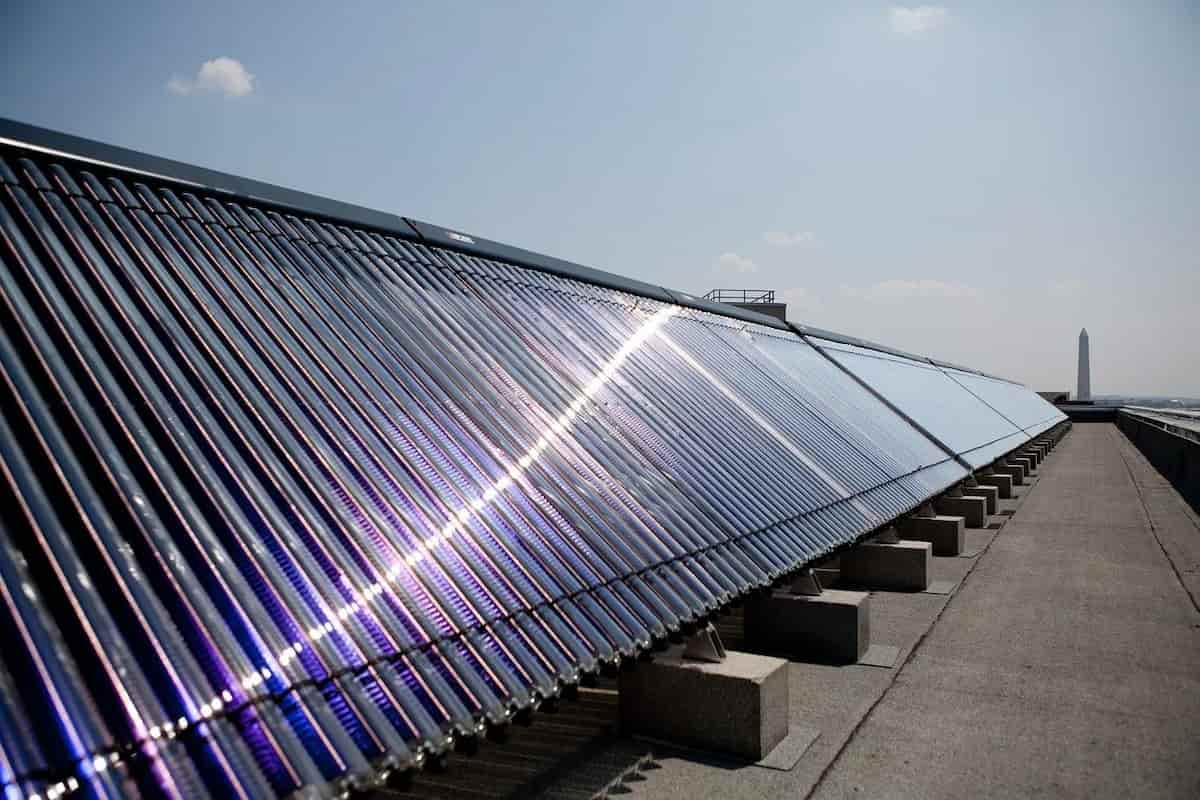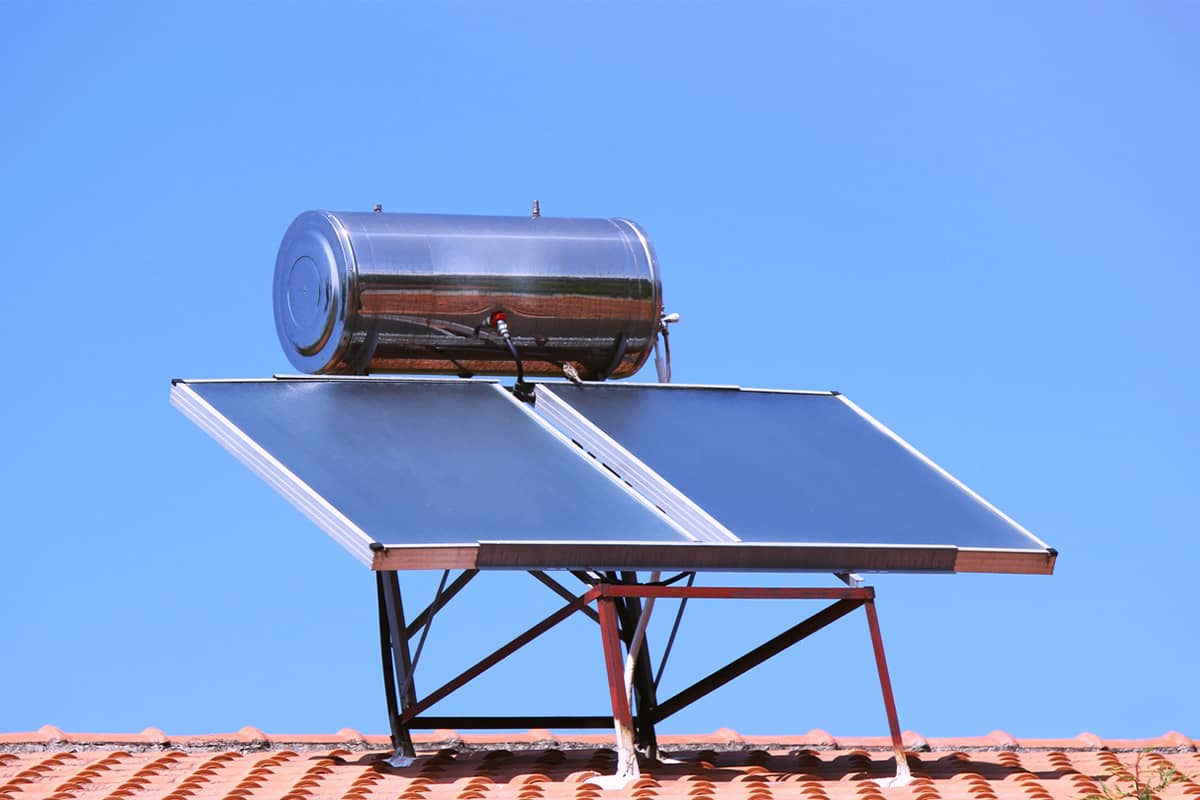Sometimes you consider yourself an expert or technical person. You may want to install your solar water heater personally. In such situations, you need an installation guide to help you do the job faultlessly. There are some steps that you have to follow to install a solar water heater safe and sound. Installing a solar water heater is not an easy job to do so we suggest to follow our installation guide. If this is the case, you need to understand the installation requirements, which can help you better grasp the possibility of a solar hot water project for your home. You want to have solar water but are still thinking about whether solar hot water is right for you. If this is the case, you need to understand the installation requirements. There are typically six phases involved in the installation of a solar hot water system, and these are the processes that will likely be followed by any installer who is installing a solar hot water system. Have a peek!
- Attach the solar collectors on the roof.

The installation of solar collectors, which resemble photovoltaic solar panels in terms of their size and form and will also lay flat on your roof, is the initial stage in the majority of solar hot water systems. These collectors will be mounted on your roof. Because the installer must verify that the collectors are correctly mounted, he may need to remove some of the shingles from your roof to reveal the layer of flat tar paper that serves as a barrier between your shingles and the roof deck. After a suitable surface has been located or constructed, the collectors are positioned using a plotting tool and then immediately screwed into the roof deck and the rafters that lie beneath it.
- Mount the cooling and heating exchangers on the storage tanks.
The second step is to repair the storage tank, which is the most important component of a solar hot water system. This is because your collectors require a storage tank into which they can deliver their heated antifreeze transfer fluid to function properly. Typically, the storage tank will be found in the basement or a utility closet, and it will be connected to water lines and antifreeze tubing to facilitate access. Your home's size and the amount of water you use each day will determine the optimal number of water storage tanks for your property. However, you do have the option to build more than one tank.

- Put in place the pipe systems that will carry the antifreeze fluid
Following this step, your installer will extend flexible piping from your roof down to your new storage tank or tanks to link your heat collectors to the heat exchanger and storage tanks. Because antifreeze fluid exits from one pipe on the side of your collectors and goes down to the heat exchanger, an extra line is placed to link the end of the heat exchanger back up to your rooftop so that fluid may be cycled. This allows fluid to be recycled. In addition, the installation of these antifreeze piping paths (one for the piping that brings antifreeze down, and one for the piping that sends it back to the collectors) requires access to your roof, which will almost always mean cutting a couple of holes in the roof deck. However, the diameter of these holes does not have to be larger than the pipe diameter for the holes to work properly. In addition, the holes may quickly and simply be patched up with insulation material and new shingles as the last steps of the installation are being carried out.
- Install conduits for the transportation of water
Because your new solar hot water system has to have antifreeze fluid circulated through it, and because water transport pipes need to be run from your storage tank to the rest of your home, these two tasks must be completed simultaneously. Your water connection to your previous hot water setup will need to be disconnected by your installer before they can connect it to your new storage tank and the backup system. This is necessary since it is probable that your home already has the right water distribution connections set up. A gas line must be run to the backup storage tank if you plan on using gas as a backup for your solar hot water system. If your backup is an electric water heater, then proper wiring must be installed. If, on the other hand, you intend to use gas as a backup for your solar hot water system, then you must run a gas line to the backup storage tank.

- Put in place the regulating systems
Then, the person installing your hot water system will need to attach two temperature sensors to your system using cabling; one sensor should be linked to your collectors, and another one should be connected to the base of your storage tank. After that, both of the devices are going to link to the central control system so that they may provide instructions regarding when the antifreeze fluid should be circulated. If the temperature at the collector is lower than the temperature in the tank, for instance, there is no necessity to circulate the fluid; but, doing so will chill the water in your tank if you do so. In addition to connecting the temperature sensors to your home's electricity supply, you will need to install a central control system. This device will serve as the "brains" of your new solar hot water installation, allowing it to facilitate the pumping of antifreeze based on the data it receives from the temperature sensors.
- Isolate the system from the outside.
After the assembly of all of the components, the final step in the process of installing solar hot water is to insulate each component individually. To do this, your installer will insulate the piping, seal any connections that may exist between components, and fill any holes that may exist in your roof. Your system must be well insulated since any energy that is wasted along with the piping systems or within the storage tank itself is savings that will not be recovered.

Wrap Up If you are looking for a way to reduce the costs of regular electric water heating, one option that might be quite helpful for you to consider is purchasing a solar water heater. Solar water heating systems are meant to heat water using sunlight that has been gathered, and these systems can be linked to a conventional water heater to reduce expenses without compromising the level of convenience provided by the conventional water heater. Working with a reputable and experienced professional solar water heater installation company is a crucial step in the process of ensuring that your solar hot water system is installed accurately and without any complications. We are one of the most dependable solar firms and solar water heater providers in the industry, and we can provide you with a solution that is both affordable and dependable when it comes to heating your water. If you are thinking about how to install a solar water heater or how to find a company that installs solar water heaters, our company is the ideal option for you to consider. The firm has positioned itself to be the ideal B2B and B2C platform for those contractors and consumers that seek the highest dependability, performance, and cost-effective solar heating systems. You may purchase a solar water heater online at a cheap price.
